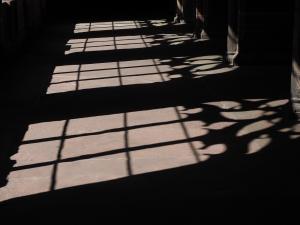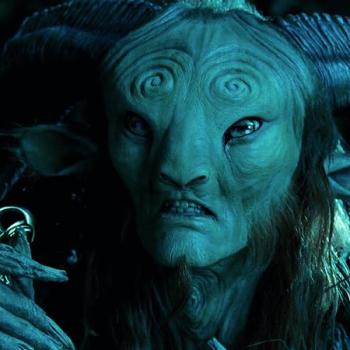
A few days ago, I wrote for Conciliar Post about the natural law themes that underpin effective horror films. As it so happens, earlier this week I watched The Nun—the latest installment in the burgeoning Conjuring cinematic universe, and a movie that serves as a particularly interesting test case for my model.
Set in 1952—a few years before the first Conjuring film—The Nun unfolds against the backdrop of a lonely Romanian abbey. When a young nun hangs herself under suspicious circumstances, concerned Vatican cardinals dispatch investigator Anthony Burke (Demián Bichir) and young novitiate Irene (Taissa Farmiga, the younger sister of Conjuring lead Vera Farmiga) to find out the truth.
As we soon learn, the abbey has become a locus of satanic activity: Valak the Defiler, the nun-demon who last stalked across the screen in The Conjuring 2, wanders its desolate halls. Cue jump scares, guttering flames, slimy tunnels, and lots of blood splatter.
With all that production value, it’s a shame the movie doesn’t really succeed. For a film that’s positively drenched in religious imagery, The Nun reflects a fundamental misunderstanding of its subject matter—in particular, why stories about demons are terrifying at all. Throughout the movie, Valak’s underlying goal seems to involve escaping the abbey and wandering the world. But why? So he can play some ugly tricks and kill a few peasants here and there?
Far from it: a demon’s objective isn’t to rack up a high body count in terrestrial terms, but to lead human beings to eternal damnation—an essential rejection of God and His eternal grace. The very existence of fallen angels discloses the very real, very terrifying possibility that they might drag down human beings to share in their alienation from God. And when that risk is on the table, death—no matter how grisly—doesn’t sound like so horrible a fate.
Along those same lines, Christian theology has traditionally held that no one is “accidentally” possessed: demons can only seize control of a host who consents. In so opening oneself to the infernal powers, a human soul rejects God. That’s why older films about demons—The Exorcist and The Devil’s Advocate spring to mind—involve patterns of temptation and misdirection that track an age-old script: ye shall be as gods. That was a more religious period in American life, one in which all these concepts made more intuitive sense.
In The Nun, we learn early on that Sister Irene periodically receives visions from God—visions that the Church deems authentic. It would make sense for Valak’s interest in Irene to stem from a desire to co-opt her credibility—to poison the Church with accounts of “visions” directed toward evil ends. And perhaps, if these visions were ever a burden to her, she might be seduced by Valak to see them as God’s curse rather than His gift. That would be a dark, compelling arc indeed. But alas, we get no such thoughtful storytelling.
At bottom, The Nun doesn’t work as a story because it doesn’t grapple with the natural-law question that’s right in front of it: what are demons and why are they frightening in the first place? Sure, there’s something startling about things that go bump in the night and that have sharp teeth, but that sort of scare doesn’t give rise to deep existential dread.
There are a few other off-key moments in The Nun that make me wonder if the writers did their homework. At one point, for instance, Irene describes the Bible as “God’s love letter to us.” True through the sentiment may be, I’m pretty sure that phrasing wouldn’t have passed muster in pre-Vatican II Catholicism. (At the risk of spoilers, I’ll give The Nun this much, though: it concludes with a burst of startlingly Eucharistic imagery that really works.)
So be it. Maybe it’s too much to expect real theological coherence from The Nun. But one can hope for something better than this.












